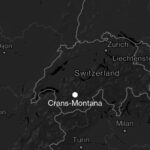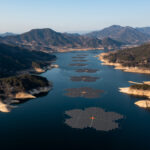Poverty and climate hazards make the southeast United States the country’s most vulnerable area to climate change impact, Oxfam America said.
A report released by the relief organization identified high-risk “hotspots” across 13 southeast states from Arkansas to Virginia where poverty factors combined with high risk of drought, flooding, hurricanes and sea-level rise.
“Social factors like income and race do not determine who will be hit by a natural disaster, but they do determine a population’s ability to prepare, respond, and recover when disaster does strike,” Oxfam America President Raymond Offenheiser said in a statement accompanying the report.
“As climate change increases and intensifies floods, storms, and heat waves, many of the world’s poorest communities, from Biloxi (Mississippi) to Bangladesh, will experience unprecedented stress,” Offenheiser added.
Oxfam said the study, using a method developed by experts from the University of South Carolina’s Hazards and Vulnerability Research Institute, for the first time overlaid risk of climate hazards with social variables.
It was released at a time when President Barack Obama’s administration is trying to push a climate change bill through Congress ahead of a United Nations climate summit in Copenhagen in December. The initiative faces opposition from Republicans.
But progress on the bill in Congress is seen as vital to unblocking an impasse on carbon emissions targets and financing at the U.N.-led talks.
“Congress must act now to address climate change and invest in the resiliency of poor communities on the frontlines of climate change at home and abroad,” Offenheiser said.
The Oxfam report, available at , includes layered maps that depict different levels of social and climate change-related hazard vulnerability in the U.S. southeast, which accounts for roughly 80 percent of all U.S. counties that experience persistent poverty.
MIAMI-DADE AMONG HIGH-RISK ZONES
For example, one identified high-risk area was Iberia Parish in Louisiana, which had some of the highest hazard exposures — 76.8 percent of land in a flood zone, 78.9 percent in the extreme drought zone, 56 percent in a sea-level rise zone, and all within a hurricane wind zone.
It also had some of the highest social vulnerability scores, due to its growing Latino population with young children, racial inequalities, and employment dependencies on industries like fishing, oil, and gas.
“Given Iberia’s propensity to climate disaster and high social vulnerability, most of the families there will be negatively affected if any one of the climate risks occurs,” the Oxfam report said.
Poor families were among the worst affected when Hurricane Katrina devastated New Orleans in Louisiana in 2005.
Miami-Dade County in Florida — a state viewed by many as a playground for the rich — was also qualified by the report as a high-risk area, whose social vulnerability was reflected in the prevalence of households headed by women earning low wages, and large communities of immigrants, many of them poor. Miami-Dade has high numbers of Haitian, Cuban and other Caribbean immigrants.
Overlaid onto this was Miami-Dade’s high climate hazard exposure — over half of the county lies within a flood zone, over 40 percent is in an extreme drought zone, 38 percent is at sea-level rise risk, and all of it is in a hurricane zone.
Coastal counties suffering from both high exposure and high social vulnerability include most of coastal south Texas, portions of south Louisiana, western Florida north of Tampa, western Alabama, and the coastal plains of South Carolina.
The Oxfam report urged vulnerable communities to lobby local, state and national policymakers to back climate change legislation that reduced greenhouse gas emissions, and to strengthen disaster preparedness and response plans.
(Editing by Eric Beech)
Was this article valuable?
Here are more articles you may enjoy.

 Cat Bonds Linked to Wildfires Lose ‘Once Untouchable’ Status
Cat Bonds Linked to Wildfires Lose ‘Once Untouchable’ Status  As Swiss Fire Survivors Fight for Life, Sparklers Eyed as Cause of Blaze
As Swiss Fire Survivors Fight for Life, Sparklers Eyed as Cause of Blaze  The 14 Global Trends That Will Shape the Climate in 2026
The 14 Global Trends That Will Shape the Climate in 2026  Nationwide Spending $100M on AI to Beef up Claims Efficiency, Customer Experience
Nationwide Spending $100M on AI to Beef up Claims Efficiency, Customer Experience 